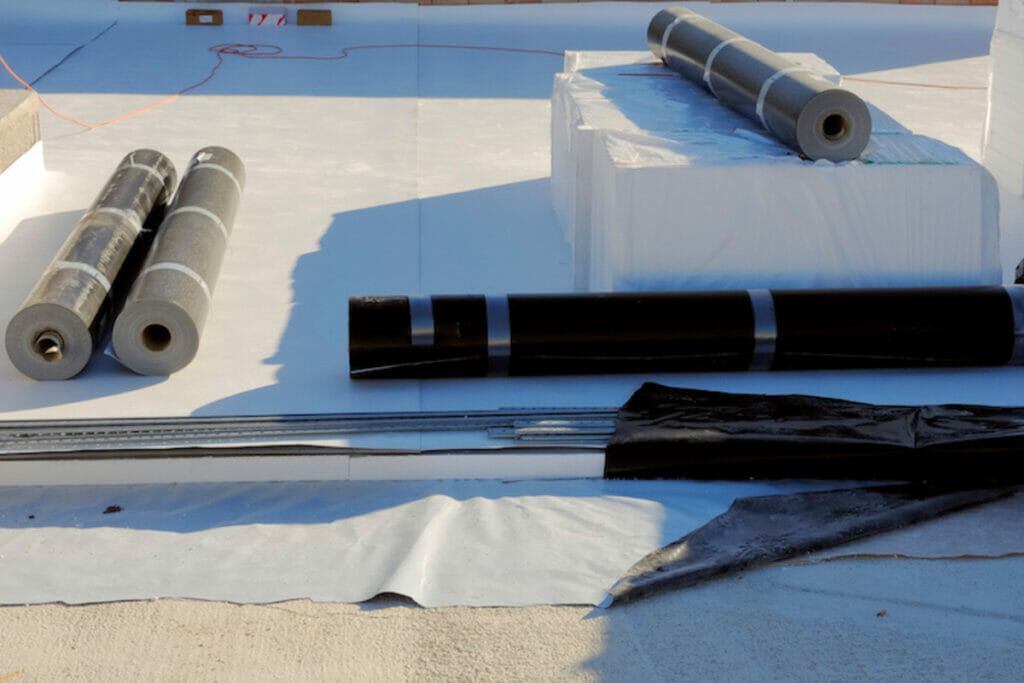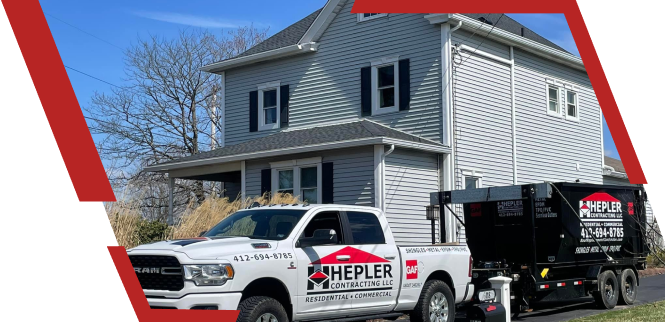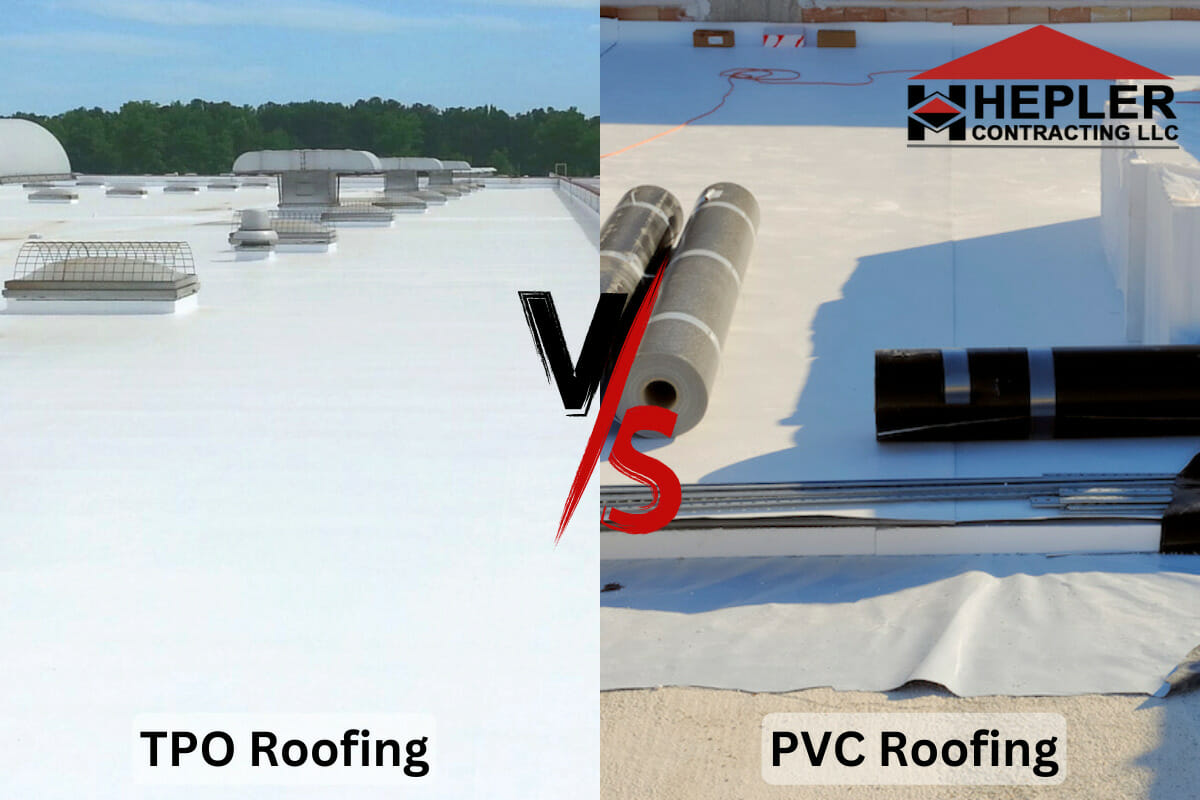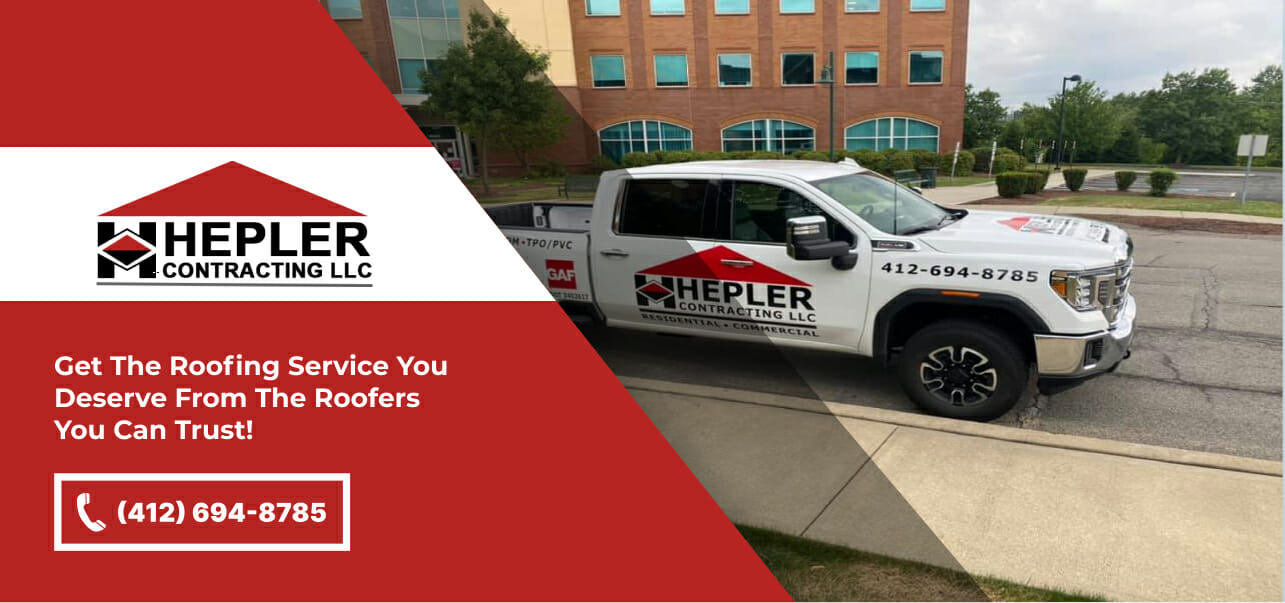A sturdy roofing system is an urgent and vital need for your commercial building. A roof is not just a safety cover from the weather and other elements, it also significantly impacts your building’s energy efficiency, productivity, and property value. So, choosing the right roofing material is key to better business and building management.
TPO and PVC are among the most popular materials for low-slope and flat roofing systems. To help you make the right choice for your building, we’ve created a detailed guide on TPO vs. PVC roofing. We’ve provided a comprehensive and unbiased comparison that’s clearer than some of the other explanations on the internet, and will hopefully help you make a final conclusion.
Let’s find out which roofing material is better for your commercial building and why!
TPO vs. PVC Roofing Membranes: An Overview
TPO and PVC are both types of single-ply roofing membranes that are used in commercial construction. TPO, which stands for thermoplastic olefin, is made from a blend of ethylene-propylene rubber and polypropylene. PVC, which stands for polyvinyl chloride, is made from synthetic plastic polymer.
TPO Roofing Membranes

A TPO roofing membrane is typically white and is known for its energy efficiency. It reflects heat and sunlight, reducing the amount of energy needed to cool the building. It is also popular for its durability and resistance to cold and humid weather conditions. Additionally, TPO roofs are environmentally friendly, as they can be recycled at the end of their lifespan.
PVC Roofing Membranes

PVC roofs, on the other hand, are available in a range of colors and are known for their ability to withstand high winds and severe weather conditions. A PVC roof also has several benefits that make it a great option for buildings with industrial or chemical applications. In addition to being highly resistant to chemicals, a PVC roof is also fire-resistant. This combination of chemical and fire resistance makes PVC roofing an ideal choice for improving a building’s safety.
Both these materials offer unique benefits and have a few drawbacks. We’ll now compare TPO and PVC roofing membranes in detail to provide you with the information you need to make an informed decision.
TPO vs. PVC Roofing Membranes: A Detailed Comparison
We’ve analyzed the most crucial factors for you, including cost, durability, energy efficiency, and the materials’ resistance to certain weather and chemical elements.
Cost:
The cost of TPO and PVC roofing materials can vary depending on a number of factors, such as the size of your roof and the complexity of the installation. Generally, TPO is slightly cheaper than PVC, making it a good option for those on a tight budget. However, the cost difference between the two materials is usually not significant enough to be the deciding factor. The average cost of installation is $6 for TPO roofs and $8 for PVC.
Durability:
When we discuss TPO vs. PVC roofs, they have a similar durability of 25 to 30 years. However, TPO roofs are relatively new to the industry and are still being developed, so most membranes only have an average lifespan of 25 years. Due to this, it is essential to choose top-class TPO products, such as GAF’S EverGuard TPO membrane and accessories that come with 30-year guarantees and a 25-year warranty. On the other hand, PVC roofs have been around for a long time, and there are many manufacturers that promise 30 years of lifespan.
Weather Resistance:
TPO and PVC roofing membranes meet the fire resistance standards set by FM Global and Underwriters Laboratories, Inc. However, their performance varies in different climates.
TPO performs well in most areas, especially hot, cold, and rainy states. It is more flexible in cold weather and is less likely to crack or break due to temperature fluctuations. In warm and humid conditions, it offers excellent waterproofing and cooling benefits due to its rubberized composition and white surface.
However, PVC membranes may not hold up well in cold and snowy regions but can withstand windstorms and hail better than TPO, as PVC is more rigid and less prone to tears from impact. However, such storms lead to a reduced lifespan over time.
Chemical Resistance:
Upon comparing PVC vs. TPO roofing membranes, it is proven that PVC membranes offer better chemical resistance and are non-reactive to most substances. However, TPO membranes are less chemical-resistant and may react to oil or chemical fumes.
If your commercial building handles chemicals and exhausts the fumes, you need to apply a chemical-resistant TPO roof coating. Alternatively, you can choose PVC if your building is located in a state with a milder climate.
Foot Traffic Resistance:
Heavy foot traffic is not ideal for any single-ply roofing membrane, be it TPO, PVC, or EPDM. It reduces the lifespan of the membrane and will lead to a need for frequent repairs. However, PVC offers better resistance to punctures and weathering that can be caused by foot traffic. But regardless, you should pay attention to the amount of foot traffic your roof gets in order to keep it well-maintained.
Energy Efficiency:
Energy efficiency is a common topic when discussing TPO vs. PVC roofing. Both membranes have a white, reflective surface, but TPO roofs are considered to be more energy-efficient than PVC. This is due to their higher solar reflective index (SRI). This means the roofing membrane will reflect larger amounts of heat and UV rays and reduce the cooling requirements of a building. This leads to a significant reduction in the cost to cool your building and the energy needed to do so, especially in sunny climates and for businesses that work with heat sources on a regular basis.
PVC roofs also have a reflective surface, but with a lower SRI. You can use PVC roof coatings or a higher quality PVC membrane (which will cost more) with better reflective properties to save energy and get better results.
You will find that both TPO and PVC roofing membranes are suitable for low-slope and flat commercial roofing. Your choice depends on the business activities, local weather conditions, and budget for this project.
In conclusion, TPO roofs are more suitable for areas with high precipitation and extreme temperatures and can be treated with coatings for better chemical resistance according to your business activities. PVC roofs are better for areas with average temperatures and seasonal wind storms, or for use on chemical-intensive factories or buildings.
If you own a building in Pittsburgh or the surrounding areas of Pennsylvania, we’ll share more specific comparisons and information to help you out.
PVC vs. TPO Roofing Membranes: Which is Best for Pittsburgh, PA?
Pittsburgh is situated in a continental climate zone characterized by cold, snowy winters and warm to hot summers. During the summer months, thunderstorms are common in the region. This type of climate can pose a challenge for commercial roofing systems, as extreme temperature fluctuations and exposure to precipitation can cause degradation and damage to roofing materials over time. As such, it is crucial to select a roofing material that is well-suited for the climate of Pittsburgh to ensure the roof’s longevity and performance.
- Considering the above factors and the local climate, TPO roofing is a better choice than PVC for commercial buildings near Pittsburgh, Pennsylvania. You could also choose an EPDM membrane if you want a more affordable, durable, and hail-proof roofing option.
- On the topic of EPDM vs. TPO roofing, EPDM can also be a suitable material for buildings in Pennsylvania. EPDM is originally black but is also available in various reflective and energy-efficient, light colors, including gray and white. EPDM roofs can last for 40 years, and the average cost is around $5 after installation.
- In addition to selecting the right roofing material for your commercial building, it is important to ensure the roof is properly installed and maintained. Proper installation includes selecting a good commercial roofing contractor, choosing the appropriate installation method, and using high-quality materials and adhesives to ensure a secure bond.
- Regular maintenance, such as roof inspections, cleaning, and prompt repairs, can also help extend the life of the roof and prevent costly damage or leaks. By taking these steps to ensure proper installation and maintenance, you can help ensure that your investment lasts for many years to come.
We hope our blog post on TPO vs. PVC roofing helped you. Keep in mind that it’s best to consult a local commercial roofing contractor with the license, experience, and knowledge of working in your area. They will be able to provide you with the best recommendations and an accurate estimate on the total roofing cost.
If you need help choosing and installing the right roofing material for your building in Pennsylvania, reach out to us for a free consultation and estimate.
Free Consultation & Estimate on TPO and Other Commercial Roofing Systems
At Hepler Contracting LLC, we’ve been helping property owners and managers with their roofing needs for years. We are a part of the Pennsylvania community, and want the best for our customers. During a free consultation, our experts will evaluate your current roof’s condition, discuss your specific needs and preferences, and offer you a range of options, including TPO roof installation.
We’ll also provide you with a detailed estimate on the costs involved so that you can make an informed decision. Our goal is to help you choose the right roofing material for your building that meets your budget, aesthetic preferences, and functional requirements. Contact us at (412) 694-8785 to schedule your free consultation and take the first step towards a new, durable, and energy-efficient roof for your commercial building.


